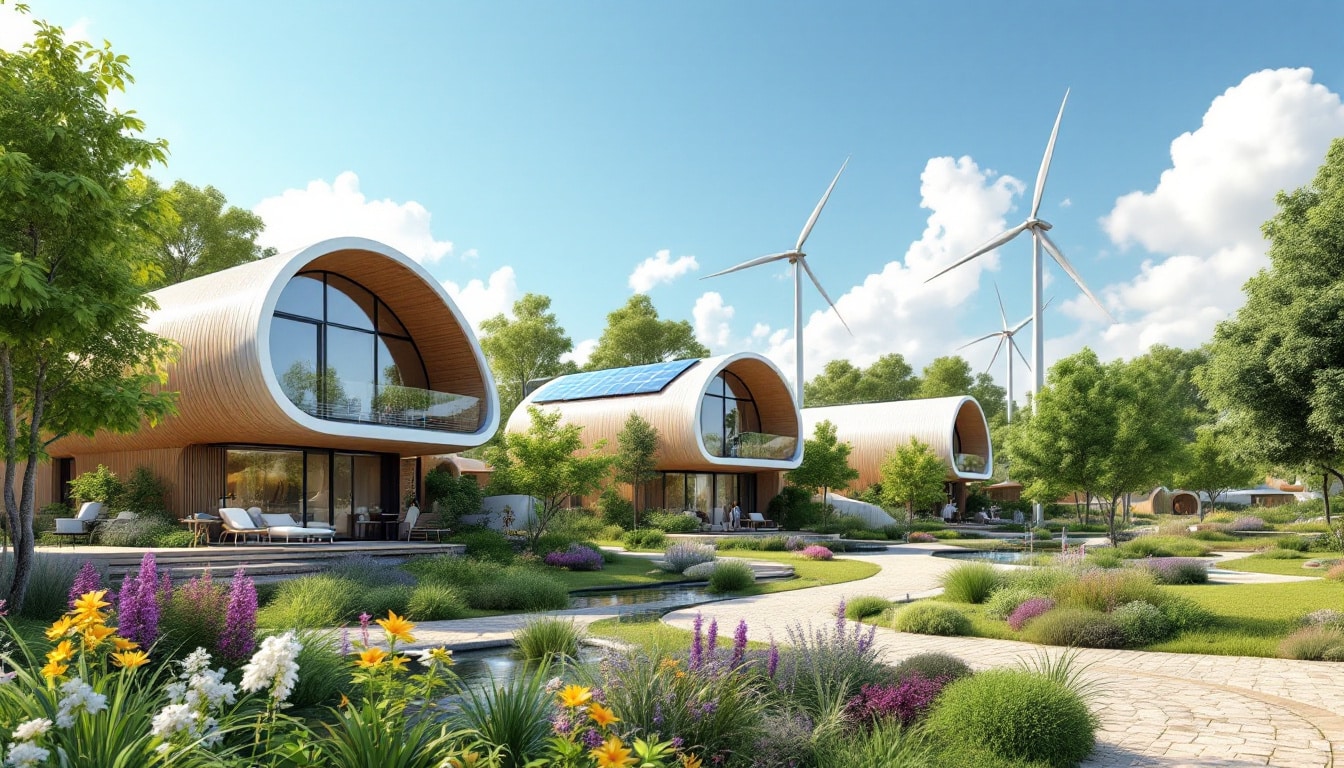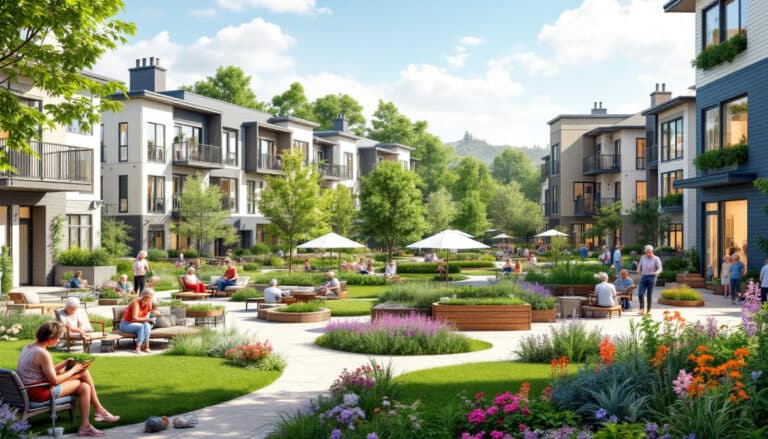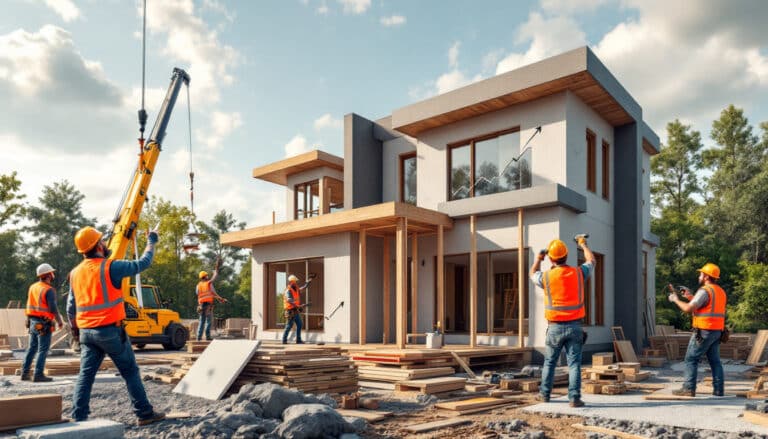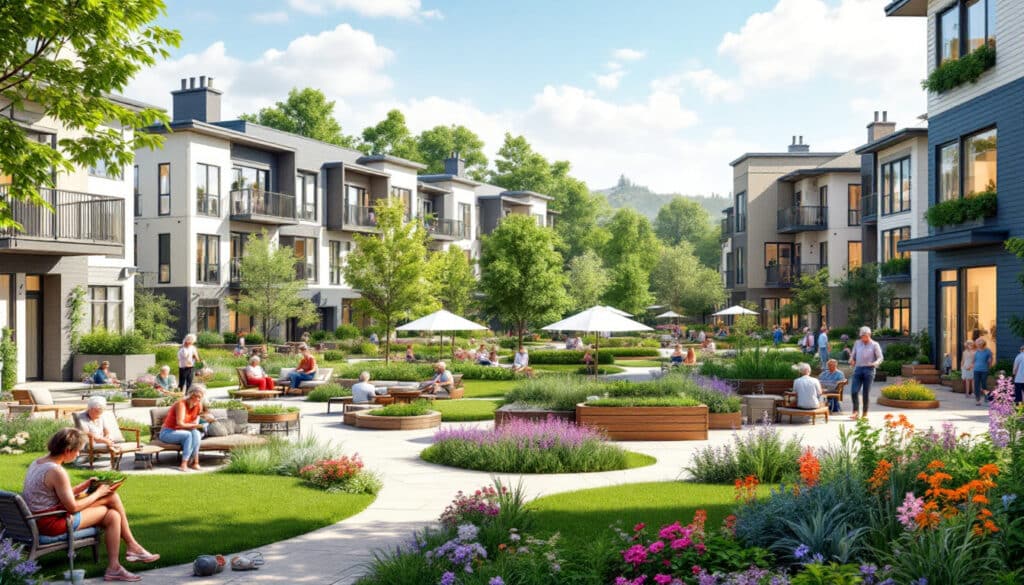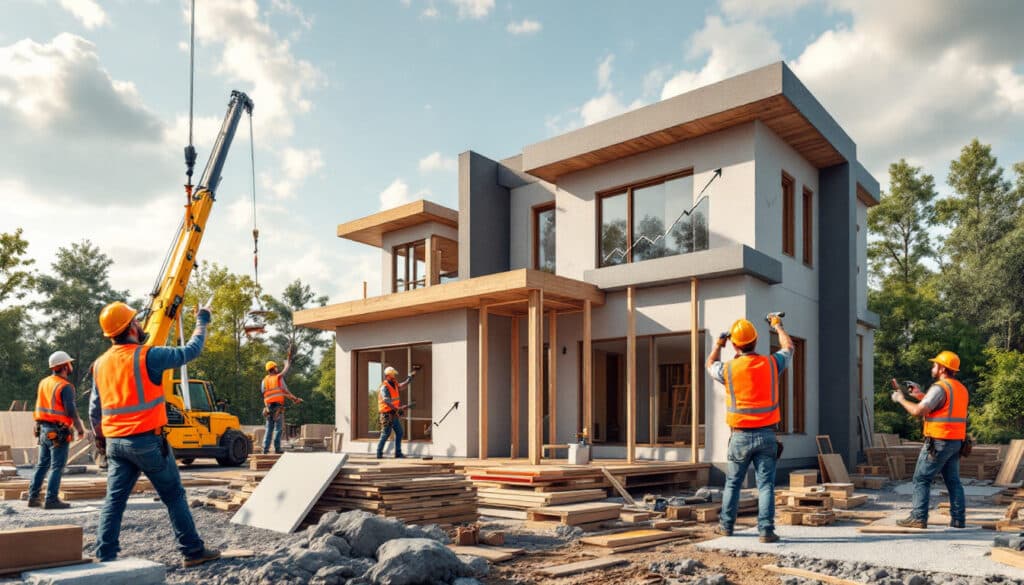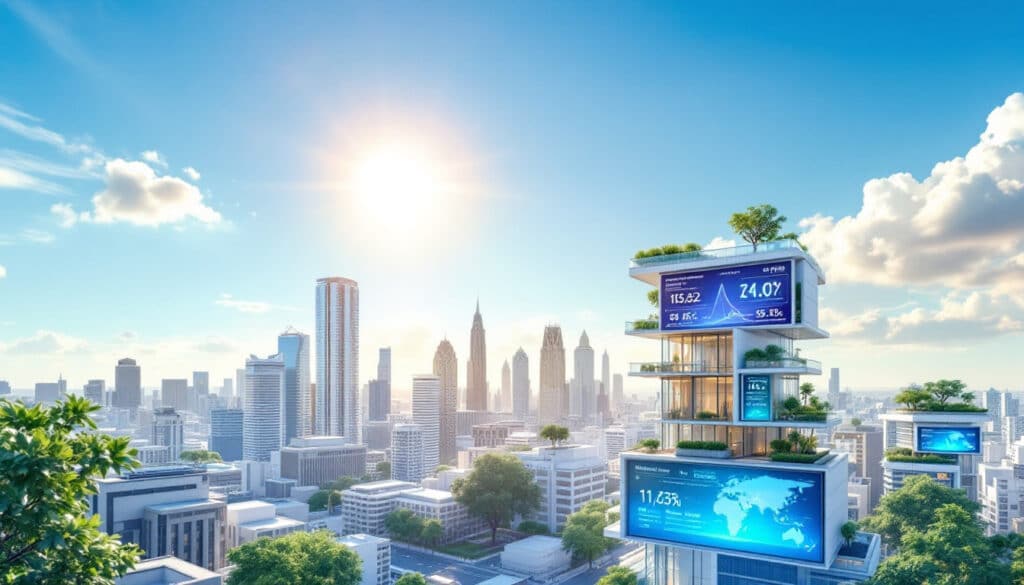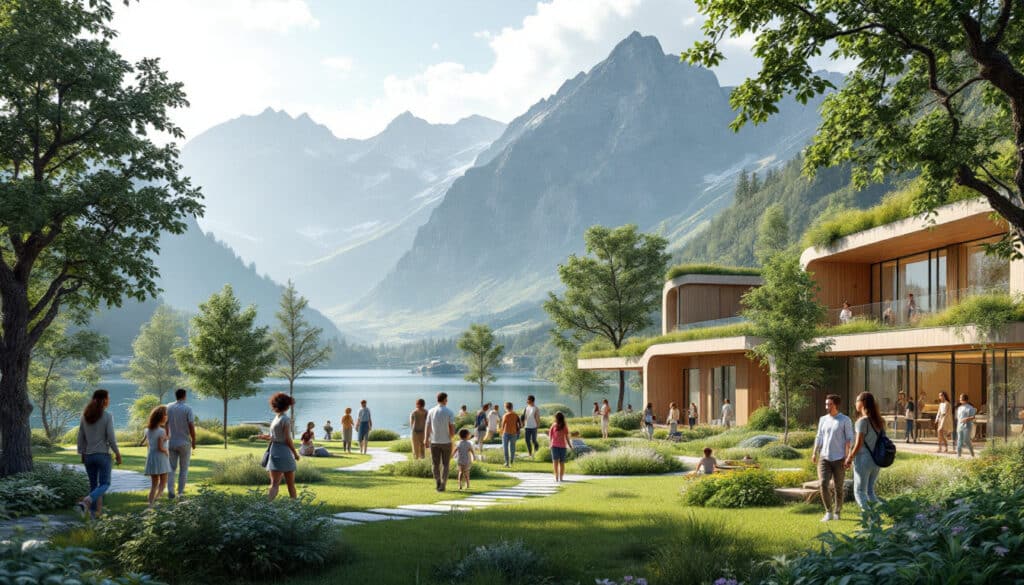We use cookies and data to optimally provide and maintain our services. These tools help us monitor outages and protect our platform from spam, fraud, and abuse. By measuring the engagement of our audience and the site statistics, we better understand the use of our services and improve their quality.
If you choose to accept all cookies, we will be able to develop and improve new services, measure the effectiveness of advertisements, and offer you personalized content based on your settings. By accepting, you will also benefit from ads tailored to your preferences. If you prefer to reject all cookies, we will not use these tools for these additional purposes. Non-personalized content will be influenced by the content you are currently viewing, your active search activity, and your location. You can select “More options” to obtain additional information and manage your privacy settings at any time.
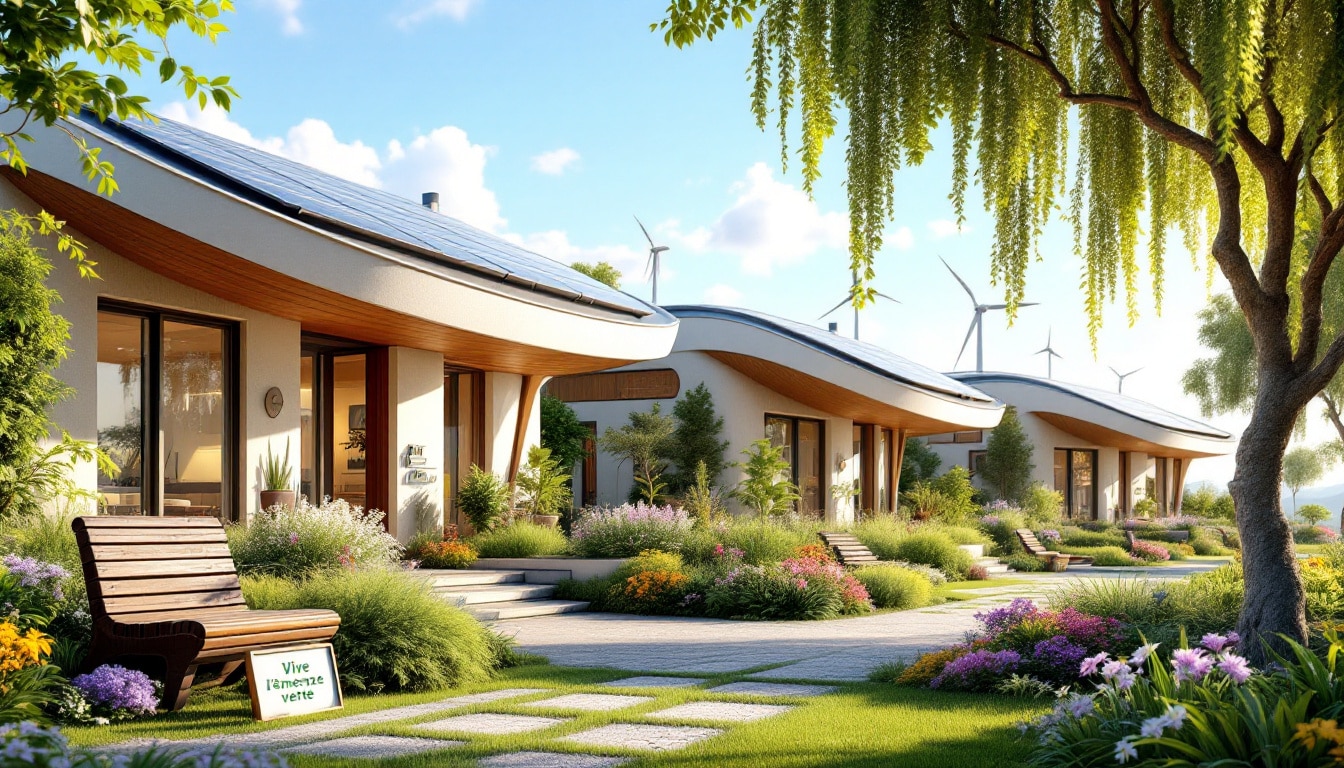
Table of Contents
TogglePositive Energy Houses: A Revolution in Sustainable Living
Positive energy houses represent a significant advance in the field of sustainable construction. They not only reduce their energy consumption but also produce more energy than they consume. This innovative approach transforms our way of thinking about housing and paves the way for a more environmentally friendly future.
What is a Positive Energy House?
A positive energy house, often referred to as a passive house, is designed to produce more energy than it uses. This is made possible through a combination of advanced insulation, ventilation techniques, and the integration of renewable energy sources such as photovoltaic solar panels or domestic wind turbines. These houses optimize energy efficiency, thus reducing the carbon footprint of their occupants.
For example, the innovative concept of the passive house in Cancale perfectly illustrates this approach. These dwellings are designed to make the most of available natural energy, utilizing high thermal performance materials and smart energy systems.
What are the Advantages of Positive Energy Houses?
The advantages of positive energy houses are numerous and impact both the environment and the well-being of occupants. First, these houses allow for significant savings on energy bills due to their low consumption and their capacity for renewable energy production. Furthermore, they contribute to the reduction of greenhouse gas emissions, actively participating in the fight against climate change.
In terms of comfort, positive energy houses provide a stable indoor temperature throughout the year thanks to effective insulation and controlled ventilation. Additionally, they are often equipped with smart technologies that optimize energy management, thereby improving the quality of life for residents.
A case study on passive buildings reveals that these houses not only reduce energy costs but also increase the real estate value of properties, making them an attractive long-term investment.
What are the Key Components of a Positive Energy House?
Several essential elements enable a house to achieve positive energy status. High-performance thermal insulation is crucial for minimizing heat loss in winter and keeping cool in summer. Materials such as rock wool, polyurethane insulating panels, or solid wood structures are often used for their excellent thermal properties.
Controlled mechanical ventilation (CMV) is also essential, ensuring constant air renewal without compromising insulation. This technology maintains optimal indoor air quality while reducing energy needs related to heating and cooling.
Finally, the integration of renewable energy sources, such as solar panels or domestic wind turbines, allows for the production of the necessary energy to power the house and, in some cases, sell excess energy back to the grid. The combination of these elements creates a favorable energy balance, ensuring that the house produces more energy than it consumes.
How to Design a Positive Energy House?
Designing a positive energy house requires a holistic approach and careful planning. From the design phase, it is essential to incorporate bioclimatic architectural principles that leverage natural resources (like sunlight and wind) to maximize energy efficiency.
The orientation of the house plays a crucial role. For example, a south orientation allows for maximum benefit from passive solar heating in winter, while minimizing overheating during summer with appropriate solar protections. The use of high thermal inertia materials also helps stabilize indoor temperature variations.
The integration of smart technologies, such as energy management systems, optimizes energy consumption and production. These systems automatically adjust the use of appliances based on real needs and weather conditions, ensuring maximum efficiency.
A study by Application highlights the importance of collaboration between architects, engineers, and energy experts to create truly efficient and sustainable homes.
What Challenges Must Be Addressed for Positive Energy Houses?
Despite their many advantages, positive energy houses present certain challenges. The first concerns the initial construction costs, which may be higher than those of traditional houses due to the use of advanced materials and technologies. However, these costs are often offset in the long term through energy savings.
Another challenge is the need for specific technical expertise. Constructing positive energy houses requires special skills in insulation, ventilation, and the integration of renewable energy systems. It is essential to call upon experienced professionals to ensure the quality and performance of these homes.
Finally, public acceptance and awareness are crucial for the success of positive energy houses. Many consumers are not yet fully informed about the benefits and possibilities offered by this type of construction. Awareness initiatives and financial incentives can play a key role in encouraging more people to adopt this sustainable model.
What is the Future of Positive Energy Houses?
The future of positive energy houses looks promising with a gradual increase in their adoption around the world. Technological advancements continue to make these homes more accessible and efficient. For example, innovations in solar panels and energy storage systems allow for the optimization of renewable energy production and use.
Public policies also play a decisive role in promoting positive energy houses. Many governments are implementing regulations and financial incentives to encourage the construction and renovation of sustainable housing. These measures contribute to reducing the economic and technical barriers associated with this type of construction.
In the long term, positive energy houses could become the norm, redefining standards for housing. The growing demand for sustainable and environmentally friendly solutions pushes the construction sector to continuously innovate, paving the way for increasingly efficient and self-sufficient habitats.
A 2021 outlook analysis indicates that the smart building market is expanding rapidly, with sustained growth driven by rising demand for sustainable and innovative energy solutions.
How to Integrate Wood into Positive Energy Houses?
The use of wood in the construction of positive energy houses is an emerging trend, favored for its many ecological and aesthetic qualities. Wood is a renewable material, with excellent thermal insulation capacity and a low carbon footprint. Additionally, it brings natural warmth and authentic beauty to the habitat.
The Maugy House perfectly illustrates this integration. By specializing in the use of wood, this company contributes to a new era of sustainable construction, offering positive energy houses that combine energy performance with respect for the environment.
Wood also allows for great architectural flexibility, facilitating the creation of innovative and customized structures. Combined with other sustainable materials and smart technologies, wood can play a central role in designing high-performance, aesthetic positive energy houses.
What are the Economic Impacts of Positive Energy Houses?
The adoption of positive energy houses has positive economic repercussions at several levels. On one hand, it stimulates the sustainable construction sector, creating specialized jobs and fostering technological innovation. Building professionals must constantly adapt and train to meet the requirements of this new type of construction.
On the other hand, the savings on energy bills represent a considerable financial advantage for homeowners. In the long term, initial investments in sustainable technologies are offset by lower energy costs, thus increasing the profitability of real estate projects.
Furthermore, positive energy houses increase property values. Buyers are willing to invest more in energy-efficient homes, viewing these houses as safe and sustainable investments against fluctuations in energy prices. This trend contributes to enhancing real estate assets and energizing the market.
Finally, the rise of positive energy houses can have positive effects on the local economy. By promoting the use of local materials and encouraging short circuits, this type of construction supports local businesses and reduces transportation costs and the associated carbon footprint.
What is the Importance of Innovation in Positive Energy Houses?
Innovation is at the heart of the development of positive energy houses. Technological advancements continuously improve the energy efficiency and renewable energy production of homes. For example, energy management systems are becoming increasingly intelligent, capable of adapting to the real-time needs of occupants and optimizing the use of available resources.
Innovative materials also play a crucial role. From eco-friendly insulations to triple-glazed windows, each element contributes to improving the overall energy performance of the house. Moreover, the integration of cutting-edge technologies, such as solar roofs or rainwater harvesting systems, enhances the autonomy and sustainability of positive energy houses.
Innovation is not limited to technical aspects. It also encompasses construction methods and business models. For example, modular and prefabricated approaches can reduce construction time and costs, making positive energy houses more accessible to a larger number of people.
Close cooperation between researchers, architects, and contractors is essential to continue pushing the boundaries of what positive energy houses can achieve. This synergy encourages the emergence of increasingly efficient solutions tailored to the current and future challenges of sustainable construction.
How to Finance a Positive Energy House?
Financing the construction of a positive energy house may seem challenging due to the higher initial costs compared to traditional homes. However, several financing options and government assistance can make this project more accessible.
Financial incentives, such as grants, tax credits, and low-interest loans, are available to encourage the construction of sustainable housing. These aids can cover part of the costs associated with the installation of renewable technologies or the use of eco-friendly materials.
Additionally, banks and financial institutions are beginning to offer specific products for sustainable construction projects, recognizing the long-term benefits of positive energy houses. These products often include favorable repayment terms for homeowners engaging in ecological projects.
The return on investment is also an important aspect to consider. The energy savings realized on domestic bills and the increase in the real estate value of positive energy houses can largely offset initial costs. Moreover, some homeowners may enjoy additional income from selling excess energy produced by their photovoltaic systems.
It is also advisable to engage specialized consultants in sustainable project financing to identify the best solutions and optimize available resources. These experts can help navigate the complex landscape of financial aid and maximize funding opportunities for positive energy houses.
—
{% block content %}
This site uses cookies and data to provide and maintain Google services, track outages, and protect against spam, fraud, and abuse, measure public engagement and site statistics to understand how our services are used and improve their quality. If you choose to “Accept All”, we will also use cookies and data to develop and improve new services, deliver and measure the effectiveness of advertisements, display personalized content based on your settings, and show personalized ads. If you choose to “Reject All”, we will not use cookies for these additional purposes. Non-personalized content is influenced by factors such as the content you are currently viewing, activity in your active search session, and your location. Non-personalized ads are influenced by the content you are currently viewing and your general location. Personalized content and ads may also include results, recommendations, and more relevant ads based on your past activity on this browser, such as your previous Google searches. We also use cookies and data to tailor the experience based on age, if relevant. Select “More options” to see additional information, including details on managing your privacy settings. You can also visit g.co/privacytools at any time.
{% endblock %}

